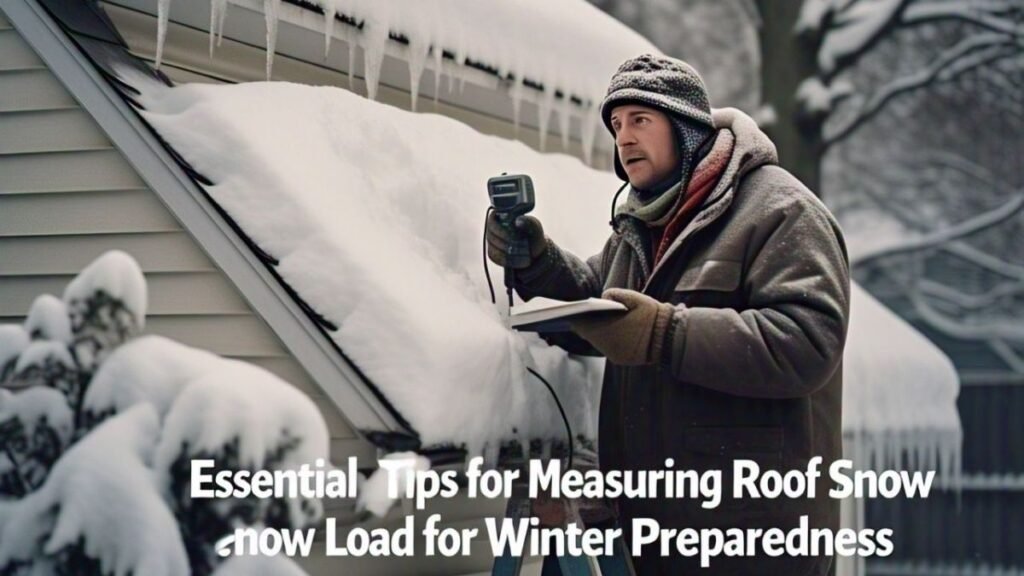Understanding Roof Snow Load Basics
Home preparation becomes a paramount concern as the cold winter months loom ahead. One aspect that requires specific attention is understanding roof snow load measurement. This refers to the amount of snow your roof can bear without risking collapse or significant structural damage. Heavy snow accumulation can have dire consequences without appropriate oversight, ranging from insignificant leaks to complete roof failures.
It is essential to regularly monitor and understand your roof’s capacity to handle snow accumulation. These preventative measures help keep the tour structure intact during unpredictable winter weather, safeguarding your home and everyone inside from potential harm.
Factors Affecting Roof Snow Load
A variety of elements influence the weight that snow places on your roof. Each snowfall brings a unique set of conditions determining how heavy or light it might be. Light, fluffy snow may not pose as much of a problem, but wet, compacted snow can dramatically increase the load. Beyond the type of snow, the architecture and material of your roof also play a significant role. Homes with flat roofs accumulate snow faster than steeply pitched roofs, turning flurries into potentially dangerous weights.
Moreover, your geographical location and regional weather patterns can significantly affect expected snow load levels. Areas traditionally known for heavy snowfalls would require more robust evaluations than those in milder climates. Understanding these intricacies will equip you to prepare adequately for winter’s challenges.
Techniques for Measuring Snow Load Accurately
Measuring snow load doesn’t have to be complex. One straightforward method involves using a snow gauge or an ordinary ruler to determine snow depth. This helps estimate the snow’s density and weight on your roof. Collecting and weighing a sample can provide more precision, allowing you to calculate the weight per cubic foot.
These measurements are more than numbers—they provide actionable insights into your home’s safety under winter’s grip. Having the right tools and a simple routine for measuring the snow load can make all the difference, transforming guesswork into informed decisions that protect your roof.
Preventive Measures to Manage Snow Load
So, how can you ensure your roof remains safe throughout the snowy season? Implementing effective snow removal strategies is fundamental. A roof rake might suffice for smaller amounts, but enlisting professional services is safer to prevent accidental damage or risk personal safety for significant accumulations.
Regularly scheduled roof maintenance also helps identify potential vulnerabilities before they become problematic under the weight of heavy snow. In regions with predictable heavy snowfalls, implementing long-term solutions, such as roof cable deicers, or even considering architectural adjustments when possible are worth considering.
Legal Requirements and Safety Standards
Understanding local and national building codes regarding snow load requirements is crucial. These regulations ensure structures can withstand seasonal snow loads within their region. Compliance with these codes provides safety and shields homeowners from possible legal and financial repercussions in the event of roof failure.
For a comprehensive understanding of these regulations, refer to detailed resources like the guidelines on snow load codes, which offer in-depth insights and directives on how to follow them.
Impact of Climate Change on Roof Snow Load
While traditional patterns offer guidance, it is indisputable that climate change has introduced new variables, shifting the predictable norms. Heavier and more frequent snowfalls mean roofs could face unanticipated stresses. Recent studies underscore the importance of reconsidering old assumptions, pointing to the need for heightened vigilance in measuring and adapting to new snow loads.
Staying updated about climate change’s effects on snow patterns can help identify trends affecting your region. It offers foresight into future conditions so homeowners can prepare adequately and make informed decisions.
Case Studies: Real-life Examples
Examining real-world cases can provide actionable lessons. In areas where insufficient snow load management was practiced, roof collapses have served as stark reminders of the consequences. These incidents highlight vulnerabilities and illuminate pathways to enhanced safety through better planning and execution.
Encouragingly, there are also many success stories from regions with rigorous snow load management strategies. These accounts demonstrate the efficacy of proactive measures, where early intervention and consistent practices have successfully mitigated risks and preserved structural integrity.
Conclusion: Ensuring Winter Safety Through Proactive Snow Load Management
Preparing your home for winter’s challenges means being proactive about hazards such as snow load. You can ensure a safe and secure winter season by understanding, measuring accurately, and managing the snow on your roof methodically. The insights and strategies discussed protect your roof and contribute to peace of mind as you confidently navigate winter.



